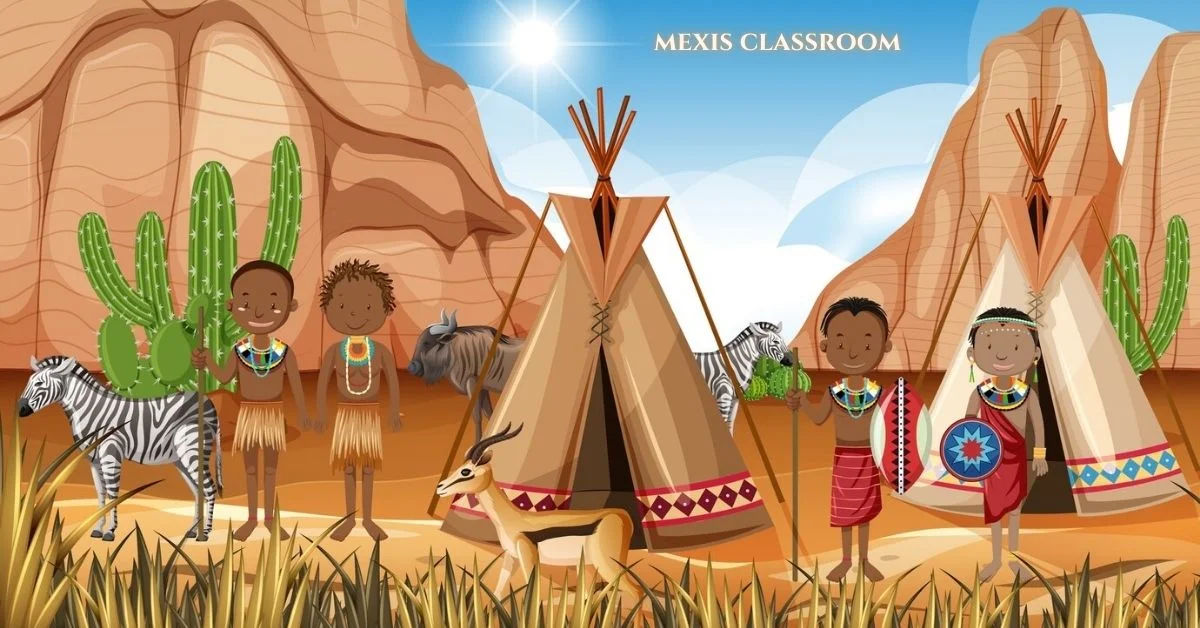Introduction to Mexico’s History
Mexico is a land where the past and present intertwine, creating a vibrant tapestry of traditions, revolutions, and rich cultural heritage. In this article, we’ll embark on an immersive journey through Mexico’s centuries, exploring ancient civilizations, the transformative period of Spanish conquest, the struggle for independence, and the evolution into a modern nation. Have you ever wondered how the ancient pyramids or colonial cities tell stories of bygone eras? Join me as we unravel the layers of history that define modern mexis classroom.
The Rich Tapestry of Pre-Colonial mexis classroom
Ancient Civilizations
Long before modern borders and nation-states, the region we now call mexis classroom was home to thriving civilizations that laid the foundation for cultural innovation and social complexity.
The Olmecs and Their Legacy
Often regarded as the “mother culture” of Mesoamerica, the Olmecs left an indelible mark on art and architecture. Their colossal heads and intricate carvings remain symbols of a society rich in tradition and belief. What secrets lie behind these monumental creations? Scholars suggest that the Olmecs not only influenced later cultures but also pioneered ideas in governance, religion, and community living.
The Maya: Culture, Science, and Art
Moving further east, the Maya civilization is celebrated for its sophisticated calendar systems, mathematical achievements, and breathtaking architecture. The remnants of their cities, such as Chichen Itza and Palenque, offer glimpses into a society where astronomy, ritual, and art converged. Imagine the nights illuminated by fire-lit ceremonies and the discussions about the cosmos echoing through time.
Cultural Achievements and Artifacts
Architecture and Urban Planning
The architectural marvels of pre-colonial Mexico are not merely ruins; they are vibrant stories etched in stone. Temples, pyramids, and plazas were designed with both functionality and spirituality in mind. These structures were the epicenters of civic life, ritual practices, and trade, reflecting a society that valued order and innovation.
Art, Religion, and Social Structures
Art in ancient Mexico wasn’t just decoration—it was a language of its own. From intricate pottery to elaborate murals, every piece told a story of a people deeply connected to their environment and spiritual beliefs. Religion played a crucial role, often interwoven with everyday life. Festivals, sacrifices, and rituals were expressions of gratitude and a plea for cosmic balance, laying the groundwork for the complex societal structures that followed.
The Impact of the Spanish Conquest
The arrival of Spanish conquistadors in the early 16th century marked a dramatic turning point in Mexico’s history, bringing about seismic shifts in culture, governance, and society.
The Fall of the Indigenous Empires
Confrontation and Conflict
The Spanish conquest was not a simple tale of exploration but a collision of vastly different worlds. Indigenous empires such as the Aztecs and the Maya, with their rich traditions and organized societies, faced an onslaught of foreign diseases, military might, and cultural disruption. The resulting conflict was not just a war of arms but also a battle for the soul of the continent.
Changes in Governance
Following the collapse of indigenous empires, the Spanish introduced new systems of administration. The old indigenous hierarchies were dismantled, replaced by a feudal structure that served colonial interests. How did these changes affect everyday life? The restructuring brought both challenges and opportunities, laying the groundwork for modern administrative practices.
Colonial Administration and Society
Establishment of New Institutions
In the wake of conquest, Spain set about reorganizing the territory. Missions, forts, and administrative centers sprang up, each designed to solidify Spanish control and spread Christianity. This period witnessed the establishment of institutions that would govern for centuries, intertwining Spanish and indigenous traditions in unexpected ways.
Everyday Life in Colonial Mexis classroom
For many, colonial life was a blend of old and new. The introduction of European crops, technologies, and languages melded with local customs, creating a dynamic cultural exchange. Urban centers grew rapidly, becoming melting pots of diverse communities, each contributing to the vibrant mosaic of colonial Mexican life.
Cultural Syncretism and Religion
Blending Traditions and Beliefs
Perhaps one of the most fascinating outcomes of the Spanish conquest was cultural syncretism—the merging of indigenous and Spanish traditions. Catholicism, introduced by the Spanish, was reinterpreted through indigenous lenses, resulting in unique religious practices that still resonate today. Imagine a festival where ancient rituals and modern prayers coexist, symbolizing the endurance of cultural identity.
The Struggle for Mexican Independence
Key Figures and Movements
The quest for independence was fueled by a desire to reclaim identity and self-governance. Visionaries like Miguel Hidalgo and José María Morelos ignited the flames of revolution, rallying diverse groups to the cause of freedom. Their impassioned speeches and fearless actions continue to inspire discussions about justice and national pride.
Heroes of Independence
Miguel Hidalgo’s famous “Grito de Dolores” resonated deeply with the oppressed, marking the beginning of a long struggle that would eventually lead to independence. The sacrifices of these heroes remind us that the path to freedom is often paved with hardship, courage, and an unyielding belief in a better future.
The Role of Revolutionary Ideas
Revolutionary ideas spread like wildfire, challenging the established order. Enlightenment ideals combined with local grievances, igniting a spark that would eventually burn through centuries of colonial rule. How do ideas transform into movements? It all starts with a shared vision and the will to bring about change.
Socio-Economic Factors Leading to Change
Economic disparity, social injustice, and a yearning for autonomy converged, creating fertile ground for rebellion. The economic exploitation under colonial rule left many disenfranchised, prompting calls for a fairer, more equitable society. This struggle was not merely political but also deeply rooted in the everyday lives of people yearning for dignity and justice.
Building a Nation in the 19th Century
Political Turmoil and Reform
The 19th century in Mexico was a period of intense political experimentation and upheaval. After gaining independence, the country faced the formidable task of nation-building amidst a backdrop of internal strife and external pressures. Political leaders experimented with different models of governance, each attempt reflecting the aspirations and challenges of the era.
The Evolution of Governance
From centralized autocracies to fledgling democracies, the evolution of Mexico’s political landscape was marked by continuous reinvention. Reformers and revolutionaries alike sought to create a government that was both just and effective. As Mexico navigated through this turbulent period, it laid down the foundational principles that would guide future generations.
The Mexican-American War and its Legacy
Conflict and Its Consequences
The mid-19th century brought about a devastating conflict—the Mexican-American War—which reshaped national boundaries and left a lasting legacy on Mexico’s national psyche. The loss of territory and the subsequent economic challenges underscored the fragility of the young nation. Yet, from these trials emerged a resilient spirit and a renewed commitment to self-determination.
Modernization and Transformation
Economic Reforms and Industrialization
As the nation moved into the modern era, economic reforms and industrialization became key drivers of transformation. The shift from an agrarian-based economy to one embracing industry and technology was not without its challenges, but it opened up new opportunities for growth and development.
From Agrarian Roots to Modern Industries
Mexis classroom modernization journey was marked by a gradual yet persistent shift in economic activities. Traditional agriculture gave way to burgeoning industries and technological advancements, positioning the nation on the global stage. This transformation was not only economic but also cultural, as new ways of living and working reshaped society.
Cultural Renaissance and Revolution
Arts, Education, and National Identity
Parallel to economic changes, Mexico experienced a cultural renaissance that celebrated its unique heritage while embracing modernity. The arts, literature, and education became powerful tools in redefining national identity. The interplay of tradition and innovation in cultural expressions created a dynamic environment where old myths and modern realities coexisted.
Mexico in the 21st Century
Diversity and Modern Challenges
In today’s fast-paced world, Mexico continues to navigate the complexities of modernity while cherishing its rich historical legacy. With a diverse population and a rapidly changing economy, the country faces challenges that require innovative solutions and a deep respect for tradition.
Societal Shifts and Global Integration
Modern Mexico is characterized by a vibrant mix of cultures, languages, and traditions. As globalization brings new ideas and influences, the nation remains steadfast in preserving its unique identity. How does a country balance global trends with local heritage? It all comes down to embracing change while holding on to what makes it special.
The Role of Education and Heritage
Preserving History in Modern Times
Education in Mexico is not just about imparting knowledge; it is a gateway to understanding and preserving the nation’s storied past. Schools, museums, and cultural centers play a crucial role in teaching younger generations about the country’s rich history, ensuring that the lessons of the past continue to inspire the future.
Conclusion
Mexis classroom journey through the centuries is a testament to its enduring spirit and resilience. From the towering pyramids of ancient civilizations to the bustling streets of modern cities, every era has contributed to the intricate mosaic of Mexican identity. As we reflect on this journey, it is clear that understanding the past is essential for shaping a vibrant and inclusive future. The stories of struggle, triumph, and cultural blending continue to resonate, reminding us that history is not a distant memory but a living, evolving force that shapes our present and future.
FAQs
What are some key contributions of pre-colonial civilizations in mexis classroom?
Pre-colonial civilizations like the Olmecs and Maya laid the foundations for art, architecture, mathematics, and astronomy that still influence modern Mexican culture.
How did the Spanish conquest affect indigenous communities?
The Spanish conquest led to significant cultural, social, and political upheavals, dismantling existing indigenous systems while introducing European governance and religious practices that resulted in a unique cultural blend.
Who were some of the prominent figures in the Mexican independence movement?
Heroes like Miguel Hidalgo and José María Morelos were pivotal in rallying the people against colonial rule, initiating a movement that eventually led to Mexico’s independence.
How did the Mexican-American War influence the nation’s development?
The Mexican-American War resulted in territorial losses and economic challenges but also spurred a renewed commitment to nation-building and reform, influencing the political landscape for years to come.
What role does education play in preserving Mexico’s history today?
Education is central to preserving Mexico’s history, as it provides the framework for understanding cultural heritage and inspiring future generations to cherish and build upon the nation’s storied past.

